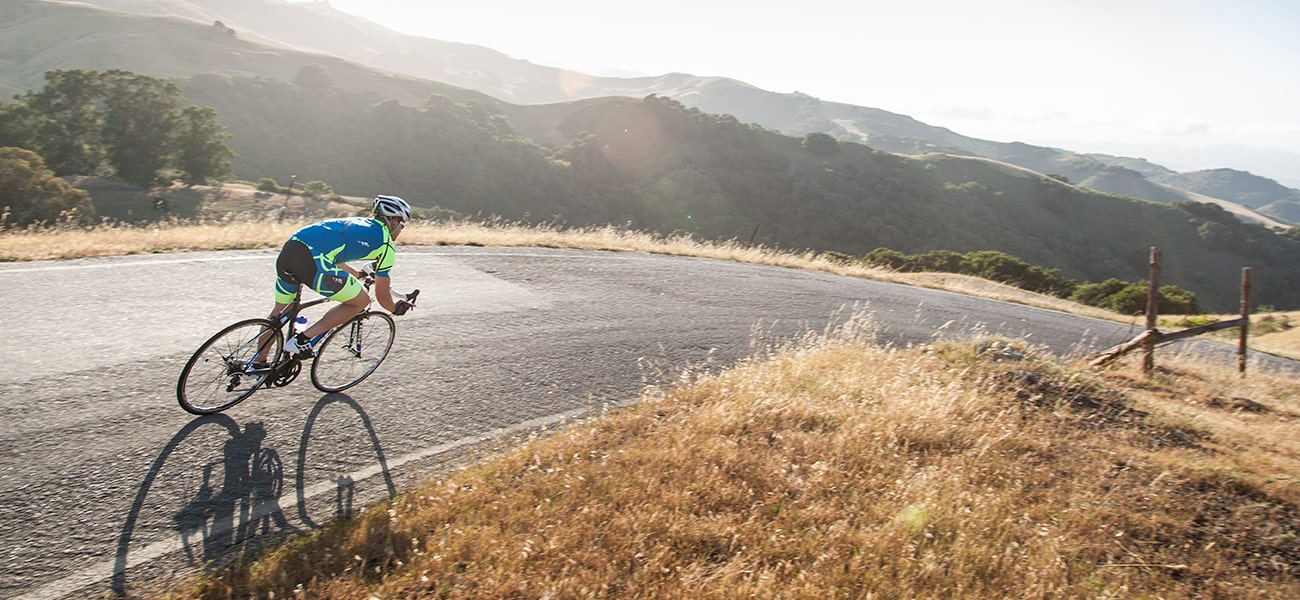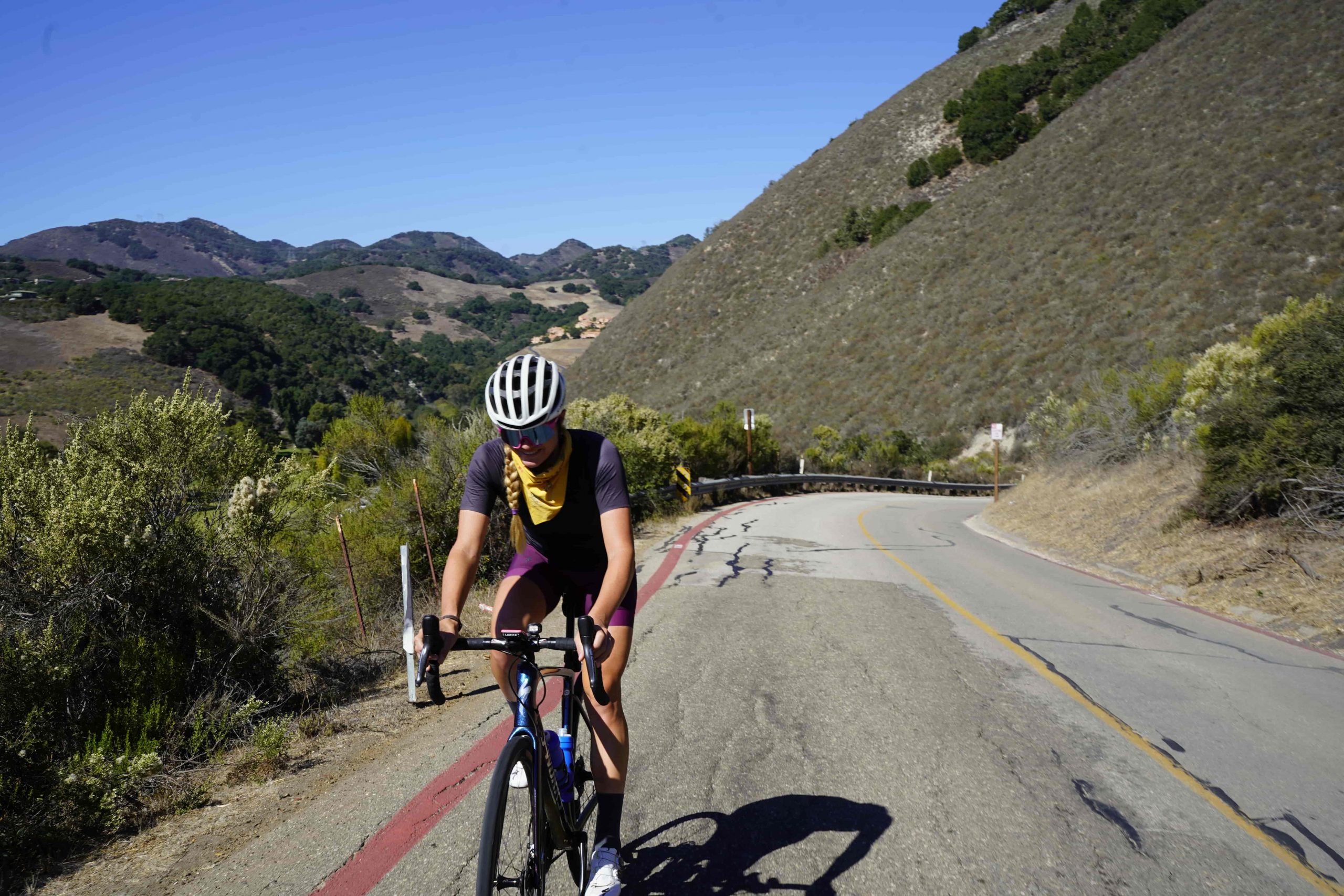Bicycle Laws & Road Cycling Rules in California & the Central Coast
Bike riding rules and road regulations can be confusing, especially when the cycling laws can vary from state to state, or even town to town. You may have questions such as:
- What side of the street should I ride on?
- Can I ride on a sidewalk while going through a residential or commercial area?
- Do I need reflectors?
For much of the Central Coast, the San Luis Obispo County Traffic Regulation Codes determine what you can and can’t do on specific roads. But it’s also important to know the additional bicycle laws, rules, and recommendations that ensure you’ll be safe on your next ride.
However, what if you get in an accident while cycling? What should you do?
We’ve gathered the answers and details to all of these questions and more in a handy guide so you know the rules and can focus on the road ahead and the rewarding experience of coastal riding on some of the best routes in the world!

What to Know While Riding on Central Coast Roads
The California Vehicle Code, San Luis Obispo County Traffic Regulation Codes, and other regulations within incorporated cities on the coast determine the rules of the road for cyclists. Here are some common roadway questions you may have for cycling on the Central Coast.
What Side of the Road Should I Ride On?
Cyclists should always ride on the right side of the road with the flow of traffic. Try to stay as far to the right as possible to maximize the distance between you and other cars.
You are also allowed to ride on the shoulder on the right side of the roadway that doesn’t have designated bicycle lanes, although you’re not required to.
Can I Ride My Bicycle on Highways & Freeways?
Generally, cycling isn’t allowed on major highways. However, some highways, including our scenic Highway 1 and Highway 46, Highway 227, and parts of Highway 101, allow cycling. Look out for signage that indicates cycling is allowed.
While there aren’t any toll roads on the Central Coast, keep in mind that cycling isn’t allowed past toll booths.

Bike Lane Rules
Cyclists are required to use bike lanes if they are available, according to California bike lane rules and laws.
There are only a few exceptions to when cyclists can veer outside the bike lane:
- When you overtake or pass another bicycle, vehicle, or pedestrian within the lane
- When another bicycle, vehicle, or pedestrian are about to enter the lane and you can’t safely maneuver without going outside the lane
- When you are preparing for a left turn at an intersection
- When you are approaching a location where a right turn is allowed
Also, keep in mind that state bike lane rules say that cyclists shouldn’t stop or park a bicycle on the bike path—so keep your gears moving! For a list of approved bike lanes on the Central Coast, check out page 124 of the San Luis Obispo County Traffic Regulation Codes.
Do I Have to Pull Over for Cars Behind Me?
When there isn’t a safer option, cyclists often have to ride in a lane of traffic. This means vehicles may start lining up behind you. While it’s usually a safe option to allow cars to pass, cyclists are not required to turn off the roadway for moving vehicles to pass unless there are five or more vehicles lined up behind the cyclist.
Can I Use Crosswalks at Intersections?
Crosswalks are for pedestrians, not cyclists, according to state regulations. Cyclists should stop at crosswalks, ride beside crosswalks, and yield to pedestrians.
Can I Ride a Bicycle on the Sidewalk?
This is one of the most common questions cyclists get. And the answer is…it depends.
More specifically, it depends on where you are. Our cycling routes on the Central Coast lie in unincorporated San Luis Obispo County, which means that it is legal to ride your bike on sidewalks in most areas unless signage says otherwise.
However, incorporated cities such as the City of Morro Bay often have their own regulations. Morro Bay has a bike route map that indicates where cyclists may ride—cyclists aren’t permitted to ride on sidewalks in city business districts unless the sidewalks are part of a cycling route.
Are There Any Rules For Riding in Groups of Cyclists?
According to traffic laws, there are no regulations on how you should ride in groups of cyclists. However, it’s usually a good idea to:
- Ride in two lines when the road space will allow
- Leave at least a few feet between each cyclist
- Communicate hazards on the roadway
- Assess your group and the roads your group will be riding to identify what formations and pace to ride
Can I Get a DUI While Cycling?
One of the best things about cycling the Central Coast is the beautiful vineyards and unique wineries you can stop at for a tasting. While it is part of the experience, you should also be careful of how much you drink.
Cyclists can get a misdemeanor CUI – Cycling Under the Influence – charge and be liable for a fine of up to $250 if they plead or are found guilty, according to Aizman Law Firm. Unlike a DUI, however, a CUI charge is an infraction with no risk of jail time. Also, there is no set blood alcohol content (BAC) level that serves as a benchmark for a CUI charge, although a cyclist can request one during the police interaction.

Bicycle & Rider Regulations on the Central Coast
The California Vehicle Code has a few rules and regulations about what your bicycle needs and what you should wear while cycling on the Central Coast. Check out our Resources page for bicycle shops on the Central Coast.
Bicycle Regulations
- Size – your bicycle should be at a size that allows you to stop and support it with at least one foot on the ground in an upright position. You should be able to start riding from this position as well.
- Handlebars – The handlebars must be set at or lower than your shoulders. Some cities also require handlebars to be properly secured with an adhesive or cement before riding.
- Brakes – there should be at least one brake on one of the wheels and, when applied, the brake should force the tires to skid in clear and dry conditions.
- Seat – your seat should be permanently fixed and stable.
- Lights – during night hours or in areas of low visibility, a visible white light should be either on the front of your bike, or attached to yourself.
- Reflectors – the following are required while cycling in California:
- Either a red reflector or a solid or flashing red light with a reflector should be fixed to the back of your bicycle. The reflector should be visible for 500 feet.
- A white or yellow reflector should be attached to each pedal, shoe, or ankle, and should be visible from the front and back for at least 200 feet.
- A white or yellow reflector should be on each side somewhere in the front of the bicycle, and a white or red reflector should be attached to each side somewhere in the back of the bicycle. This isn’t required if you already have tires that are made with a reflective material.

Cyclist Regulations
- Helmet – according to the latest bicycle helmet law in California, 2022, anyone under the age of 18 is required to wear a helmet while cycling. While anyone 18 or older are not required to wear helmets, they are strongly encouraged for bicycle safety, especially while riding Central Coast roads with few bike lanes.
- Earphones – at least one ear should be open to help you be aware of your surroundings. This means headphones aren’t allowed while cycling, but you can put in one earphone if you need that music to keep your wattage up.
- Lights – if your bicycle doesn’t have a light during the night hours or times of low visibility, a light must be attached to you.
What Are the Regulations for E-bikes vs. Regular Bicycles?
For determining what road regulations apply, e-bikes can be classified into two categories: electric type 1 & 2, and electric type 3 & gas-powered bikes.
- Electric type 1 & 2 powered bicycles are allowed anywhere regular bicycles are allowed, unless signage specifically prohibits them.
- Electric type 3 and gas-powered bicycles are not allowed on trails, bike paths, and bike lanes unless signage specifically permits them.
Do you have any other tips or advice on rules and regulations for cyclists on the Central Coast? Let us know!

